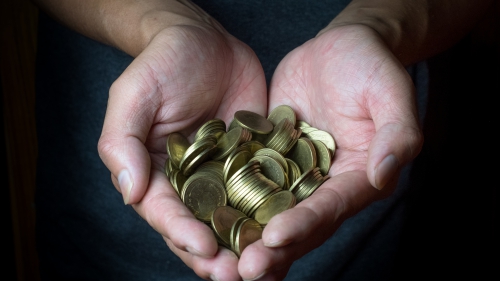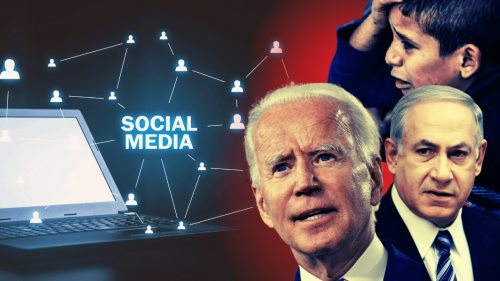Zero-Interest Financial System: A Pie in the Sky Dream or...?

An Essay for Türkiye:
For Muslims worldwide, including stalwart leaders like President Recep Tayyip Erdogan, to be able to lower interest rates (the market price of money loaned) as much as possible is the ultimate Holy Grail for attaining social and economic justice. From the Prophetic days of Islam, this strategy has been appealing to the masses because charging a high interest rate has been derided as an evil to be shunned for its inherent inhumanity. This is especially true when it overreaches and exacts tribute from those in a bad way and in need of credit. Islam, being born with the practical ideology of ‘Adl and Ihsaan (Justice and Goodness), made such financial arrangement a cardinal sin. No wonder, time and again, Muslims have tried to do without the device of interest whether in personal one-to-one lending or, as in recent times, organized lending through ‘Islamic’ banks (starting in Dubai in 1976). However, in the context of a fully Shari’ah compliant economy, ethically and practically, how low can return to money go in the consumer sector without undermining economic growth and the smooth functioning of the market economy?
As is well known, an attempt was made in the last five years in Turkiye by President Recep Tayyip’s government to reduce interest rates or the cost of borrowing. Unfortunately, it did not just fail; it backfired. Does that mean the quest for lower interest rates is a battle lost? One cannot begin to answer this question without separating consumer loans from investment loans and traditional commercial lending from Islamic financing (Murabahah or mark-up financing).
Now, the three main points of principle and one point of innovation that underlie the Islamic approach to lending (more appropriately dubbed as financing) are: i. Referring to modern terms, money cannot be viewed as a factor of production or ‘monetary input’ like other inputs - labor, land, material, etc. and likewise be upfront compensated. Money must survive and thrive on tapping into residual. ii. Any physical resource that is lent must be returned in kind (as identified by type, quality, volume, etc.). In other words, the real value must be maintained in the process of reimbursement. In modern terms, this means recognizing the time-value of money. Further, in the context of institutionalized financial transactions, operational cost and opportunity cost as well as risk-premium must be factored in. This is not rent extraction as was for a long-time confused by some Islamic economic “theoreticians”, thereby palpably slowing down understanding and development of the matter iii. If capital is to be a source of income, it must be deployed in a partnered investment environment (Musharakah). Therein, profit-loss will be shared, even gains in equity value during the duration of the partnership could be contracted for sharing. iv. Finally, institutional innovation: Since the Quran allows tijarah (trade/commerce) but forbids usury – the root of which is interest, modern Islamic financial economists had a eureka moment. They proceeded to convert any loan request for a physical product or commodity into a financing opportunity. Instead of having to lend money against interest to the client, they proposed to buy the item themselves first and resell it to the party at a mark-up. Since this was a trade, they could now bypass charging interest and levy a price instead. That is the mark-up rate and that is how murabahah financing came to be.
Now, under both murabahah and musharakah, as silent partners, the depositor and the investor characteristically have their monies managed either by the bank or by the entrepreneur. This arrangement is termed Mudarabah. This opens the window for Adverse Selection (AS; pre-depositing/financing/lending judgment error about the bank/borrower/entrepreneur) and Moral Hazard (MH; reneging on contract openly or secretly post-receipt/use of monies). The protection of silent partners from such risks could be partially handled through the use of credit scores and requiring collateral. These two options would not work for marginal (low-income) borrowers. Solutions (group lending) such as provided by the Grameen Bank of Bangladesh provides possible alternatives. Regardless, the critical role of the government and the court system to protect the aggrieved parties quickly and appropriately cannot be overstated.
Now, one cannot impose an Islamic low interest rate solution by fiat on a typical non-Islamic financial system without creating predictable side-effects like the rise of inflation rate. At this time, the finance and banking sector in most Muslim countries is hybrid – a mix of traditional banking with a smattering of Zero-Interest Financial System (ZIFS) banking. However, the ZIFS that is in place is impaired. Dominated by murabahah (mark-up) banking, musharakah is all but absent. Only in Pakistan and Iran, by last visited account, musharakah arrangement constituted a maximum of 15 percent share of all outstanding loans of the sector. Murabahah handles everything – consumer and commercial lending as well as investment and leasing, with all of them following the inefficient pseudo-purchase financing mechanism. The mark-up rate is suspect because there is at play no theory identifying it while justifying it Islamically. According to a recent award-winning paper, a mark-up rate that allows for normal profit is that elusive ‘Zero-Interest’. In fact, such banks are differentiated monopolies. So, just like natural monopolies - electricity and natural gas supply companies, that are granted sole right to production and subject to pricing regulation, these murabahah banks, owing to normative reasons alone as argued here, have to charge a mark-up rate at most equal to average cost.
Now, since typically there is no ceiling to price under tijarah (justified by the fact that Islam allows ownership, free market and profit orientation), mark-up rate incredibly has no ceiling either. Hence, investment (lending to entrepreneurs) has been conveniently folded into murabahah. In fact, given the inability to forward cash directly, through fascinating financial gymnastics liquidity is facilitated to cash-strapped entrepreneurs. Thus, as a resolution to the cash-shortage problem, the entrepreneur could proceed, say, to purchase precious metal via murabahah financing. Next, selling this acquisition at a discount on the open market raises the desired cash. A musharakah bank, however, would have no problem advancing cash with significant saving in transactions cost.
Musharakah is stymied, therefore, for at least five reasons including the ones discussed above: i. The murabahah banks have successfully spread into serving the for-profit sector at a fixed, predictable mark-up rate. So, there is a great disincentive to try anything else. ii. Weakness of murabahah banks, since about 80 percent of those sampled are under-capitalized, to start trying musharakah lending. iii. Lacking adherence to any meaningful theory that poses a ceiling, the mark-up rate under murabahah can be pushed up to compensate for risk under investment loan. iv. At this time, there is no operational theory to devise a musharakah contract (this matter, too, has been recently resolved through another award-winning paper). v. Now, besides missing a theoretical handle, the reluctance with musharakah lending arises from having to deal with AS and MH while lacking ownership and managerial control or oversight that are available to, say, Venture Capital. That is why having potent legal backing is a visceral need.
Furthermore, looking abroad to the West, say the USA, with pre-set parameters, Credit Unions and Co-operative Banks, respectfully serving fixed income earners as shareholders and farmers in an area as co-owners, could be made to do as good a job or better than current ZIFS Banking Model. In fact, the Grameen Bank is an example of a co-operative bank for marginal farmers, producers and trade groups albeit it does not have an Islamic agenda.
Therefore, through a properly redesigned ZIFS as a second-generation exercise, perhaps under Organization of Islamic Countries, Islamic Development Bank, or under a consortium of such banks jointly led by various academic circles in this field, mark-up rate may be made to reflect the objectives (Maqaasid) of the Shari’ah as closely as possible. After over 40 years of business, some of the current ZIFS banks can tolerate a transition to a normal profit-based orderliness for murabahah financing while slowly but surely engaging in musharakah lending.
The bottom-line, any Islamic-minded government that wants to move away from the shadow of interest-based economy, using a well-designed ZIFS banking operating on both cylinders is its best hope. Whether or how this will make the financial sector amenable to central bank’s stability-related management and whether asset-strong, limited-fractional banking presumably being currently pursued under ‘normative mandate’ by ZIFS will shackle economic expansion and how it will impact prices are matters to be resolved beforehand.
Shafi A. Khaled, a free-lance commentator, is a Labor and Development Economist with substantial contribution to the Theory of Islamic Finance. He also promotes dependency relief for non-Muslims through "Totally Personal Total Choice - Standing Up To Addiction," located at www.tptChoice.org.
Topics: Government And Politics, Interest (Riba), Islamic Finance, Money, Turkiye Values: Wisdom
Views: 1065
Related Suggestions
















